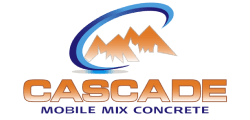Concrete Placing and Finishing
Cascade Mobile Mix Concrete
Placing and Finishing Services from Cascade Mobile Mix Concrete
Looking for expert concrete placing and finishing in Tacoma, WA, and surrounding areas? Cascade Mobile Mix Concrete has got you covered. With over 45 years in the industry, our family-owned business ensures you get quality and efficient service. Whether it’s for residential, commercial, or industrial projects, our knowledgeable team is ready to help. Our services include:
Concrete Placing
Concrete delivery should be closely coordinated with placing and finishing operations. Concrete should not be poured faster than it can be worked (spreading, consolidating, bull floating). Instead, concrete should be poured continuously and as close as possible to its final position. You should never dump concrete into separate piles and work together.
Concrete Consolidation
Placing concrete in forms and then consolidating is popular for some types of construction. The consolidation process uses vibration and gravity to compact fresh concrete within the forms and around embedded items and reinforcement. This process eliminates unwanted pockets of trapped air, honeycomb, and stone while maintaining significant amounts of entrained air.
The vibration temporarily suspends the natural friction between the aggregate particles, causing the concrete to behave as a liquid. Internal friction resumes as the vibration is stopped.
Concrete Finishing
Visible concrete (slabs used for driveways, patios, etc.) will often need finishing. You can finish your concrete in many ways, including color tinting and texturing.
Patterned-stamped finishes are popular on projects of all sizes. Some surfaces may require just strike off and screeding to proper contour and elevation. Others may be better off with a broomed, troweled, or floated finish.
Strike off and screeding is the process of cutting off excess concrete to bring the top surface of the slab to proper grade. A straight edge is pulled across the concrete and progresses forward a short distance with each movement. Bull floating eliminates high and low spots and embeds large aggregate particles immediately after strike off. This looks like a long-handled straight edge pulled across the concrete.
Jointing is required to eliminate unsightly random cracks. Contraction joints are made with a hand groover or by inserting strips of plastic, wood, metal, or preformed joint material into the unhardened concrete. Saw-cut joints can be made after the concrete is sufficiently hard or strong enough to prevent raveling.
After the concrete has been jointed, it should be floated with a wood or metal hand float or with a finishing machine using float blades. This embeds aggregate particles just beneath the surface; removes slight imperfections, humps, and voids; and compacts the mortar at the surface in preparation for additional finishing operations. Where a smooth, hard, dense surface is desired, floating should be followed by steel troweling.
Troweling should not be done on a surface that has not been floated; troweling after only bull floating is not an adequate finish procedure. A slip-resistant surface can be produced by brooming before the concrete has thoroughly hardened, but it should be sufficiently hard to retain the scoring impression.
Call us today to get started on your next project.
Contact Us
Ready to take your concrete project to the next level? Call Cascade Mobile Mix Concrete. Our team is here to ensure your placing and finishing needs are met with precision and expertise. Reach out to us today to discuss your project and receive expert advice.


Share On: